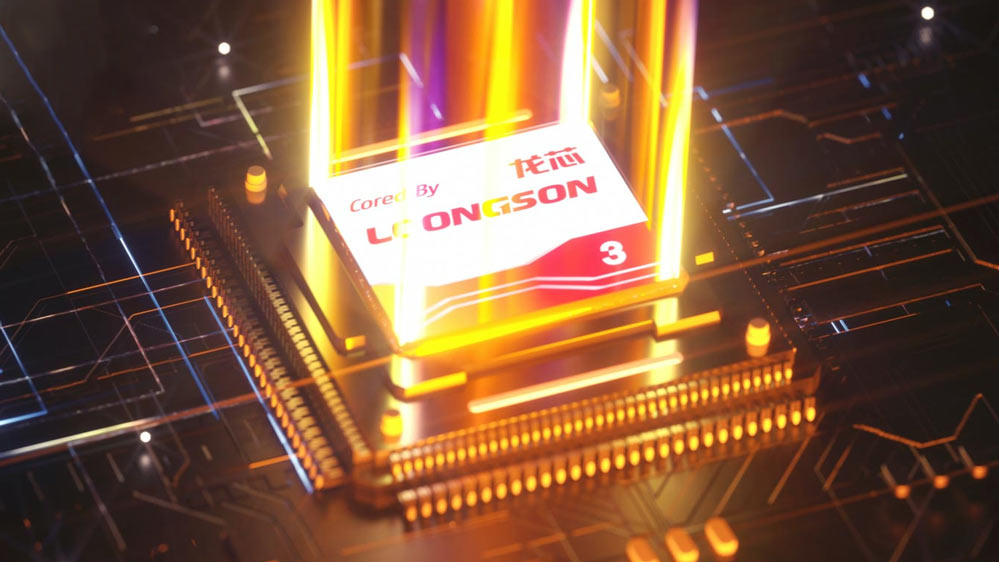Chinese chipmaker claims new Loongson 3B6600 CPU could hit 13th-Gen Intel performance
Loongson has lofty targets for its next-generation CPU.

Chinese chipmaker Loongson recently announced in an investor call its 3B6600 CPU, which will likely succeed the 3A6000 processor that debuted in April 2024. According to Fast Technology (machine translated), the new desktop chip features eight cores and will have an integrated GPU. But, more importantly, the company claims that the Loongson 3B6600 is competitive with Intel Core i5 and i7 chips of the Alder Lake and Raptor Lake processor families. While these processors are already four years old, having been launched in November 2021, they still mark an advancement over the 3A6000 which is compared to 14nm chips, which were in production from 2014 to early 2021.
The 386600 CPU is expected to maintain the 2.5GHz frequency of the previous generation 3A6000 chip. However, its single-core turbo frequency is expected to increase by 20%, allowing it to hit as much as 3GHz. Loongson even claims that its single-core performance would be one of the world leaders, but we’d like to see proper benchmarking to back this up. Aside from its single- and multi-core performance, the new chip will also support DDR5 memory, PCIe 4.0, and HDMI 2.1 output.
The company has been working on these chips since April 2024, and we expect them to arrive on the market later this year. Despite that, they’re still years behind the cutting-edge chips produced by TSMC, AMD, and Intel. Because of this, even local companies are seemingly reluctant to adopt these homegrown processors, so Loongson is likely facing an uphill battle even as China blocks Western-made chips from government offices and servers.
Despite that, Loongson's silicon has come quite a long way, especially as the company seems to be starting from scratch and doesn’t have the decades of expertise that American and Taiwanese firms have. American sanctions are likely pushing Chinese companies to develop alternatives to chips that have had export controls applied to them, and we’ve seen innovations like “tock-tock-tick” strategy to help close the gap.
Get Tom's Hardware's best news and in-depth reviews, straight to your inbox.

Jowi Morales is a tech enthusiast with years of experience working in the industry. He’s been writing with several tech publications since 2021, where he’s been interested in tech hardware and consumer electronics.
-
bit_user My guess is that they're basing these statements on SPEC2006 or other obsolete benchmarks. That's what I recall seeing, last time these sorts of claims came to light.Reply
I do wonder what sort of lithography they're using, as that should have a lot to do with the amount of IPC they can achieve.
FWIW, I tried following the source link, but there's no more information on there than what the article covered. -
bit_user If anyone is curious how the predecessor compares to modern x86 cores, here's a benchmark of its single-thread performance:Reply
Source: https://chipsandcheese.com/p/running-spec-cpu2017-on-chinese-cpus
Here's a detailed analysis of the 3A6000:
https://chipsandcheese.com/p/loongson-3a6000-a-star-among-chinese-cpus
The author is somewhat complimentary:
"Engineers at Loongson have a lot to be proud of. Creating a branch predictor on par with Zen 2’s isn’t easy, and that achievement is made all the more impressive considering where Loongson was with 3A5000. Similarly, SMT is very difficult to get right. Loongson managed to do both while dramatically scaling up the 3A5000’s out-of-order engine and fixing its DDR4 controller. The resulting massive performance gain puts LA664 on par with Zen 1, at least when each core only has a single hardware thread active."
...
"Zen 1 level single threaded performance is commendable. But we have to remember Zen 1 gained market share against Intel because it brought affordable 6 and 8 core parts into consumer platforms, not because it could win core for core against Skylake. The 3A6000 is just a quad core part, and thus lacks Zen 1’s biggest strength." -
TCA_ChinChin Reply
Do you remember what the predecessor's lithography was? I definitely agree that it could have a lot to do with a better process.bit_user said:My guess is that they're basing these statements on SPEC2006 or other obsolete benchmarks. That's what I recall seeing, last time these sorts of claims came to light.
I do wonder what sort of lithography they're using, as that should have a lot to do with the amount of IPC they can achieve.
FWIW, I tried following the source link, but there's no more information on there than what the article covered. -
Elf_Boy All very interesting.Reply
It's good (IMO) to see another independent CPU maker get better at their craft. They are not yet as big as the current giants in the market for sure, still they keep getting better and are making progress fast. It'll be fascinating to see if/when they catch up to AMD/Intel (or even ARM).
Of course the fear of some kind of Chinese Government mandated back door or security hole would likely keep me from ever using one for anything beyond a calculator and maybe not that. -
bit_user Reply
Don't know. The Wikipedia page has some info:TCA_ChinChin said:Do you remember what the predecessor's lithography was? I definitely agree that it could have a lot to do with a better process.
https://en.wikipedia.org/wiki/Loongson#6000_series -
ohio_buckeye Unfortunately they are getting to good foot my liking. Not that I’d ever use one. Just prefer they not be located in that area of the globe.Reply -
Notton When you look at the whole picture, not just desktop chips, Intel 13th gen isn't impressive in the least.Reply
The top dog is the AMD EPYC 9965.
If the Longsoon starts beating a Xeon Max 9480, then sure, let's have a look. -
zsydeepsky Reply
Loongson is a public company (SHA:688047), so they have to hold shareholder Q&A sessions, like this one:bit_user said:I do wonder what sort of lithography they're using, as that should have a lot to do with the amount of IPC they can achieve.
https://www.bilibili.com/video/BV1NNDoYeEK6
in this Q&A, the company owner claimed that they used the "mature node" which "comparable to 7nm x86". Loongson's principle is to use the node that has a domestic backup, so they won't be sanctioned to death as a chip design company.
so my guess would be between 10~12nm. their 3A6000 was 12nm. -
IBM296 Not bad. Just two years ago, Longsoon chips were comparable to Intel 9 and 10th gen chips.Reply